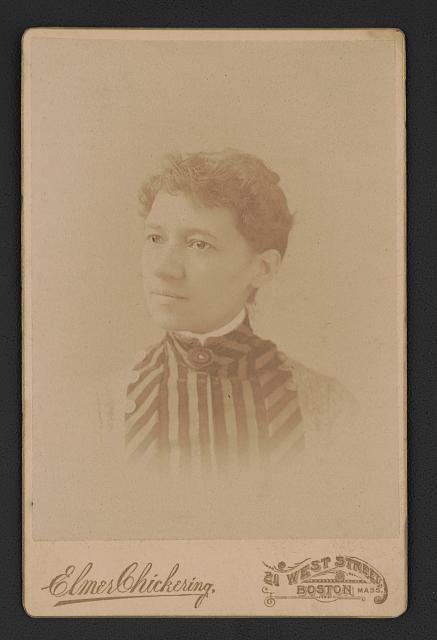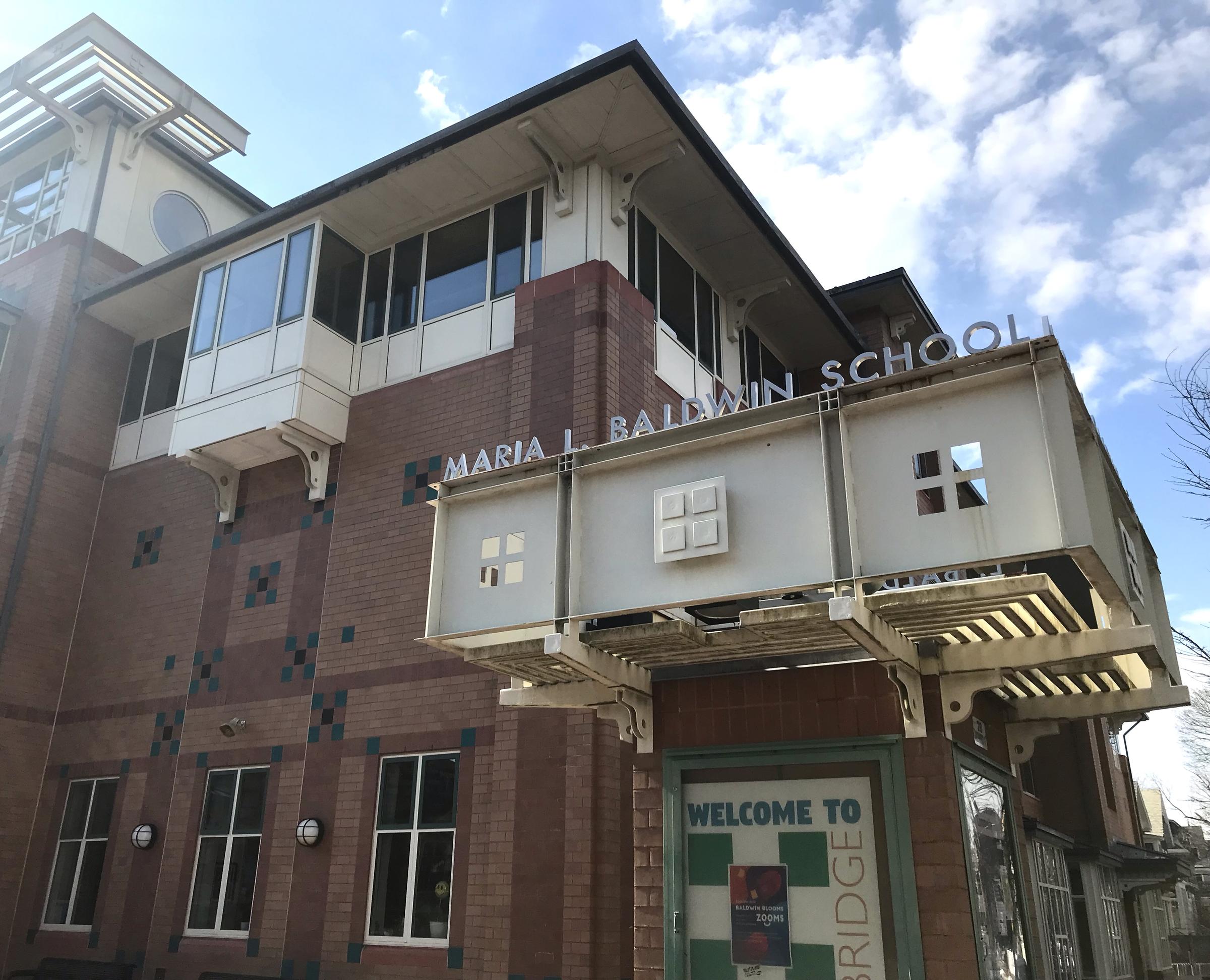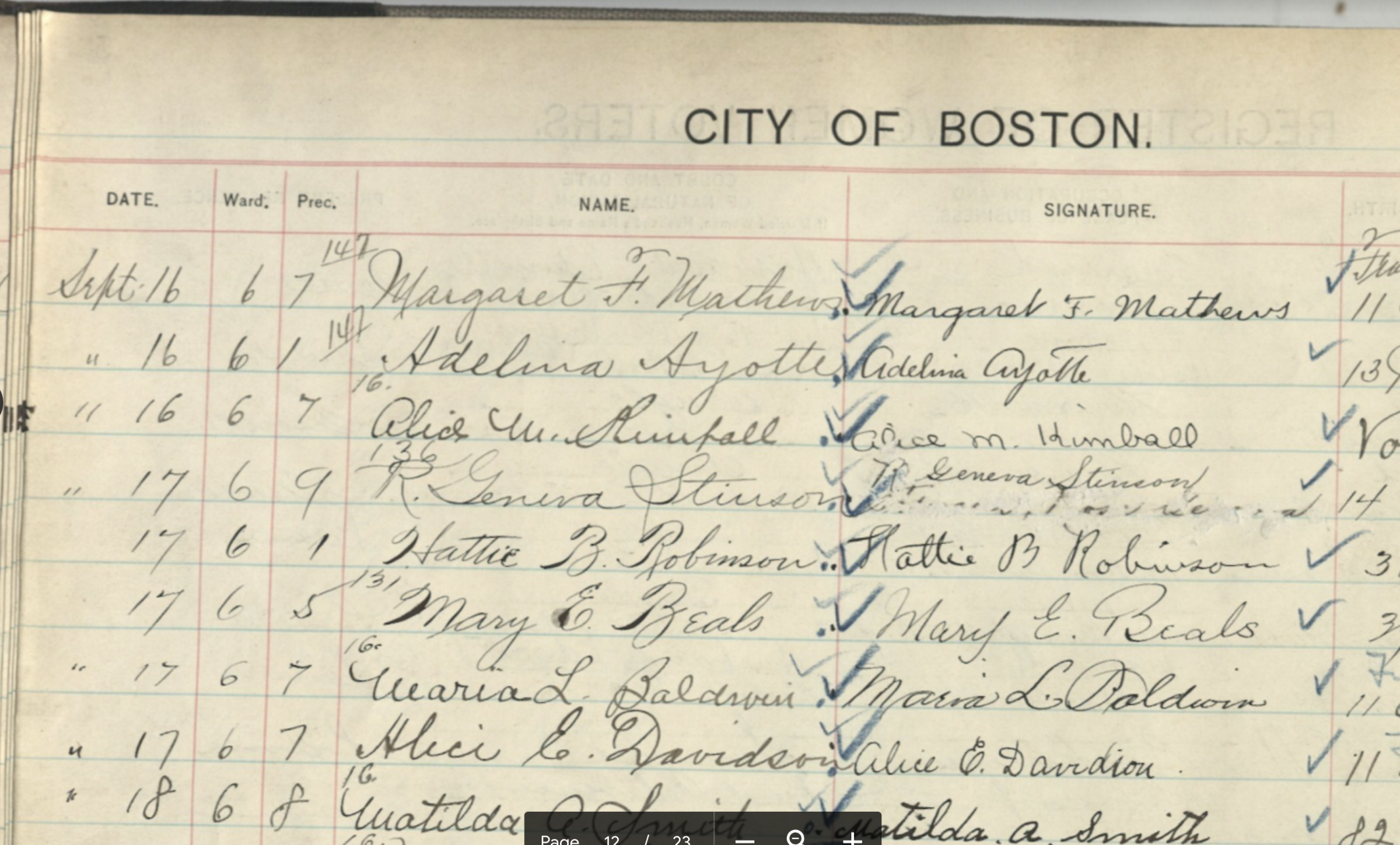Asserting Black Women’s Right to Vote: Maria L. Baldwin in 1920
Maria L. Baldwin, a prominent African American educator, civil rights activist, and suffragist in Boston, signed up to vote in the fall of 1920.
by Erin Wiebe
On September 17, 1920, Maria Louise Baldwin lined up to sign her name to a registration book recording new Boston women voters. The Nineteenth Amendment granting voting rights to women across the United States had just been ratified the previous month. Many African American women living in Boston, including Maria L. Baldwin, claimed their right to vote that year by recording their names in one of the dozens of registration books now held at the Boston City Archives.
Baldwin’s own registration entry lists few details, but they are enough to identify her and the important leadership role she held in her community. She was 63 years old when she registered.
Her residence at the Franklin Square House in Boston’s South End, a large residence house for working and student women, placed her in the Ward 6 voting district. The Ward 6 registration book lists Baldwin’s occupation as “Teacher” at the Agassiz School in nearby Cambridge.
But this short description hides the prominent role Baldwin played in leading the predominantly white Agassiz School through years of growth and new reforms. Beginning as a teacher, she was named principal in 1889 and then headmaster in 1916, becoming the first African American in New England to hold that position. The school is still open today but its current name, the Maria L. Baldwin School, now honors her legacy.
Baldwin was not only a respected educator but a tireless activist for African American and women’s rights. One of her early efforts was holding weekly meetings for African American Harvard students, including W.E.B. DuBois. In 1893, Baldwin and other African American Boston women founded the Women’s Era Club, which advocated for justice and equality for African American communities and women’s suffrage. She was also an early member of the Niagara Movement and the NAACP, president of the Boston Literary and Historical Association, and leader of efforts to support African American soldiers during World War I as president of the League of Women for Community Service, an organization that continues its community work to this day.
Following a lifetime of activism and service, Baldwin passed away in 1922, less than two years after she signed her name to the voter registration book.
The Mary Eliza Project is a digital initiative to transcribe voter registration entries of Boston women, including Maria L. Baldwin’s, making this important data publicly accessible and fully searchable for the first time.
For more information about the Mary Eliza Project, see the introductory post announcing the project’s launch. Stay tuned for more blog posts sharing our discoveries!
Further Reading
- Maria Baldwin, National Park Service
- Maria L. Baldwin Biography, The Maria L. Baldwin School, Cambridge Public Schools
- “Make the World Better”: The Woman’s Era Club of Boston (), National Park Service
- League of Women for Community Service, Boston
Erin Wiebe is a dual degree graduate student in History and Archives Management at Simmons University




